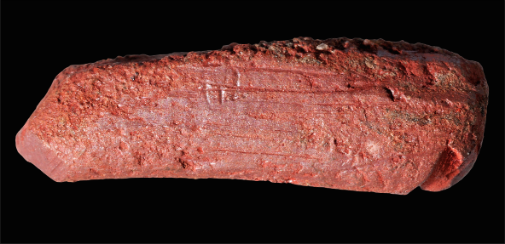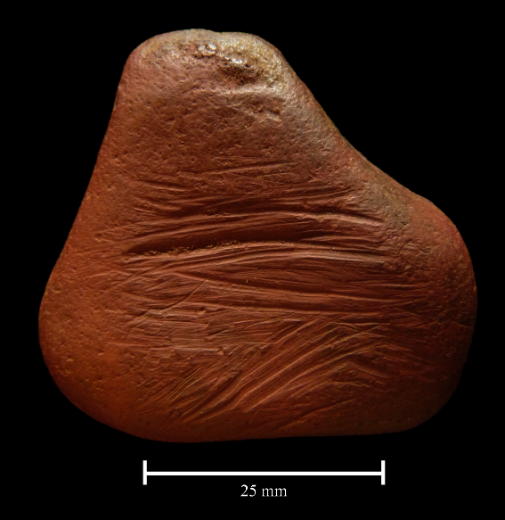10,000-Year-Old Artifact Could Be World’s Oldest Red ‘Crayon’

Archaeologists discovered what could be the world’s oldest crayon, an object that prehistoric people may have used to draw a reddish color 10,000 years ago.
Two ochre objects were found near what was once a lake in northeastern England, a crayon-looking artifact and a pebble. After an analysis, the scientists reported that both were modified by prehistoric humans — rather than entirely shaped by natural processes — and contain hematite, the reddish mineral that comes from iron rust. In a study in the Journal of Archaeological Science: Reports, the researchers wrote that the artifacts are evidence of people in the middle of the Stone Age collecting and using a red pigment.
The prehistoric crayon is almost an inch long while the smooth and rounded pebble is a little more than 1.75 inches across. According to the researchers, grooves on one side of the pebble suggest it had been scraped to rub off pigment onto something — a process they refer to as “red pigment harvesting” — while the crayon would have been molded into its elongated shape by use.
“Color was a very significant part of hunter-gatherer life and ochre gives you a very vibrant red color,” lead study author Andy Needham said in a statement from the University of York. “It is very important in the Mesolithic period and seems to be used in a number of ways.”
According to the researchers, the crayon and the pebble show them more about how the hunter-gatherers in Stone Age Britain created and used pigment.
The crayon-looking artifact in particular, Needham said, “is a very significant object and helps us build a bigger picture of what life was like in the area; it suggests it would have been a very colorful place.”
The hunter-gatherers living in Britain 10,000 years ago — a time known as the Mesolithic — may have rubbed off ochre onto objects they were using or used it to add a red hue to some of their art.
“The pebble and crayon were located in an area already rich in art,” Needham said. “It is possible there could have been an artistic use for these objects, perhaps for colouring animal skins or for use in decorative artwork.”

© Copyright IBTimes 2024. All rights reserved.





















